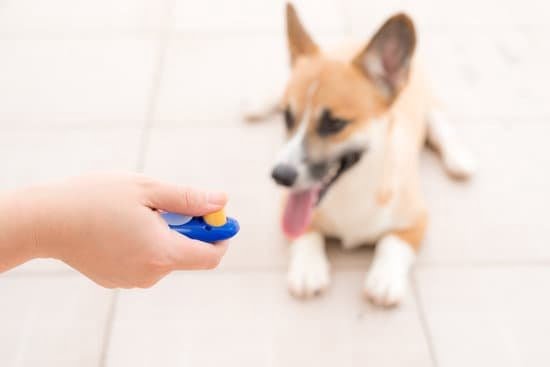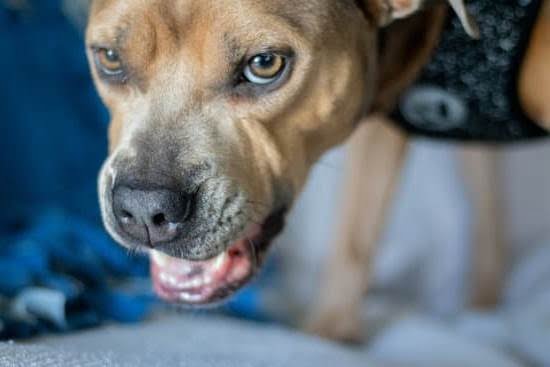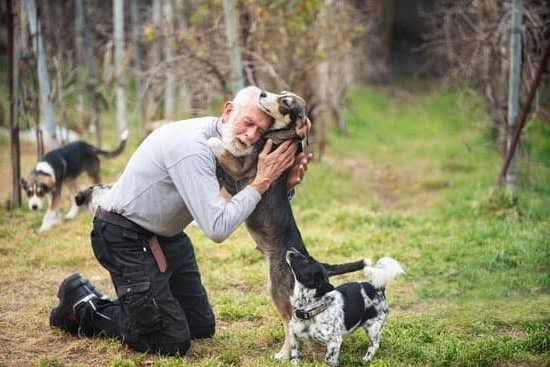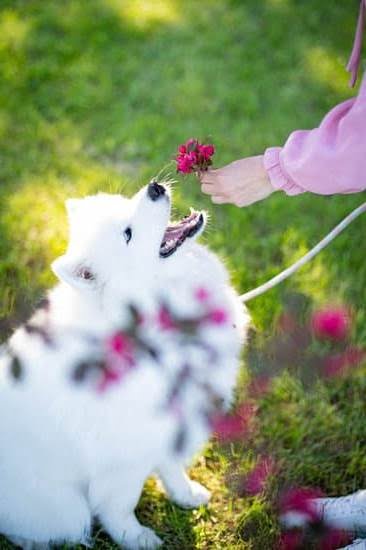Introduction
When it comes to training a dog, there are many benefits to setting expectations and boundaries – not only for the pup, but for the humans living in the household as well. For starters, your pup will have an easier time understanding and following commands when they have a good grasp of what their name is and can easily recognize it among other sounds that might take place around them. Additionally, having consistent rules and expectations also helps create calmness and peace within the home. This allows everyone involved to live more harmoniously and with less stress.
One of the most important parts of training a dog is teaching them their name. By doing so, you will be able to communicate more effectively with them. Moreover, having a dog that recognizes its name gives you greater control over them when needed or in dangerous situations. To start effectively training a dog’s name, familiarize yourself with positive reinforcement techniques and rewards before beginning the training session. Using treats or limited verbal praise in certain contexts can go a long way in helping your pup understand their name more clearly and efficiently. Additionally, safety is key! Make sure that wherever you’re conducting your training sessions is without any potential distractions or dangers so as not to overwhelm your pet or cause anxiety for you both. Lastly, remember that all pups learn differently – be patient, loving, consistent and proactive throughout all steps of the process and you should find yourself in good shape!
Setting the Scene
Before you begin training your dog’s name, make sure you set a positive and comfortable atmosphere. Select a quiet area in your home with minimal distractions. Try to limit people, animals, noise, and toys in the space when possible. Prepare any items necessary for training such as treats, toys, and clickers. Make sure that your dog is relaxed and ready to learn.
If there are distractions or anxiety-inducing factors in the room, try removing them either temporarily or permanently if possible. Providing a secure spot for him to stay such as a crate or bed can be beneficial as well. Give him time to transition into the new learning environment; let him take in his surroundings without pressure for five minutes before beginning training.
Clear Communication Basics
Training your dog’s name requires both patience and repetition. The more consistent you are, the easier it will be for your pup to learn. Start by saying his name in an upbeat voice while giving him a tasty treat. It is important to immediately reward your dog when he responds to his name; this will help him understand that when his name is said, something good will happen. After a few repetitions, start using the command as he performs the desired behavior – give the verbal cue and then provide the treat afterwords so he associates the response with being rewarded.
At first, practice being patient as it may take up to several weeks for your pooch to fully comprehend his new name and for you to recognize when he responds. Remember: do not scold or punish your pup if he does not respond or gets confused. Be gentle and use positive reinforcement whenever possible. Once your dog starts responding consistently following commands during short sessions, try increasing that period of time each day you train — 30 minutes max — and add more cues in each session that include commands such as sit, stay, come, down and leave it. Teaching basic commands helps ensure consistency between family members no matter who is around doing the training; these abilities complete their foundation skills every pup needs to live peacefully in our world!
Understanding Humane Discipline
In order to train a dog’s name, it is essential that you practice humane discipline. This means using positive reinforcement strategies to discourage unwanted behaviors. A common mistake that new pet owners make is believing that punishing a dog for bad behavior is the best way to teach them right from wrong. This approach can often result in more aggression, fear and confusion on the part of your pet. Using rewards, rather than punishments, will have a much more effective outcome with your training.
To begin the process of training your dog, choose a simple name and patiently repeat it every day when calling or interacting with your pet. Make sure to always present them with positive feedback after coming when called by providing verbal praise as well as treats or toys for responding correctly. You may also want to combine a hand signal such as pointing at them each time you say their name in order to further reinforce the connection.
Over time, you should see an improvement in how quickly your dog responds to their name being called along with an increase in overall obedience to commands and behaviors desired by you. Additionally, you may find that other people are better able to interact with and communicate effectively with your pet due to its familiarity with its own name being repeated consistently by yourself and potentially others. Ultimately, this helps ensure that all interactions involving your beloved pet remain friendly and safe while supporting mutual respect between fellow humans and animals alike!
Fostering an Appropriate Relationship
The relationship with you and your dog is an important one that requires an understanding of each other’s needs and behaviors. To create a successful bond between pet and owner, one should understand how to properly train their dog while also maintaining a good relationship between the two. Training your dog involves enforcing boundaries and rewards for good behavior in order to teach acceptable behaviors such as house rules, walking on leash, and basic obedience commands.
In order to train effectively, one must be aware of the communication process between both the owner and the dog. This means taking the time to understand how each phrase, noise, or command will be interpreted by your pooch. It’s important to be consistent with commands as well as praise – utilize treats as rewards for good behavior but remember not use them as bribery. It is also imperative that owners recognize when it’s appropriate to show patience versus when stronger measures must be taken if the pup acts out or fails to listen.
Furthermore, providing plenty of opportunities for exercise not only helps aides puppy needs such as mental stimulation but exercises their bodies too! Taking daily walks or finding activities like fetching games promotes healthy activities in dogs and will allow practice at following verbal commands. This leads into reinforcing training lessons especially within a positive environment suitable for growth in confidence among puppies or reprogramming stubborn dogs in particular. Lastly, repeatedly review old lessons over time – this allows constant reinforcement and encourages long term memory retention skills among pet owners!
Patience and Repetition
The process of training a dog to recognize its name is an important part of providing a strong relationship of trust between pet and owner. The most effective way to teach your dog its name is through patience and repetition with consistent encouragement based upon positive responses. This can be accomplished through verbal cues or hand motions in combination with treats, toys, and other forms of physical rewards. To ensure the best result, proper timing is also essential – offer immediate praise when the desired behavior is exhibited and do not allow any undesirable behaviors.
In addition to using positive reinforcement techniques to train for a name recognition response, gentle disciplinary methods may also be necessary. Ignoring undesired behaviors (such as barking) and providing earlier warnings such as verbal stern comments help to reinforce that unwanted behaviors are unacceptable. When disciplining a dog for undesired behavior, it’s important to stay calm and use firm tones rather than full-on reprimands which could be seen as punishing – never punish a dog for not recognizing their name by yelling at them or lashing out physically.
Rather than punishment, attempt redirection when bad behavior presents itself; call or gesture the animal in question
Careful Consistency of Rules and Rewards
Training a dog can be quite difficult; however, there are certain steps that you can take to make the process easier. The first step in training your dog’s name is consistency. You need to consistently use the same name when calling your dog during training. This will help teach your pup that this is their identity and must be used whenever talking about them. Additionally, it is important for you also to be consistent when instructing your pup and enforcing rules. Make sure that you provide clear instructions with exact expectations so your pup knows exactly how they should be behaving at all times.
Rewards are just as important as rules when it comes to training a name for your pup. Celebrate small successes such as following commands or coming when called by rewarding good behavior with treats and cuddles. Additionally, try breaking the lesson into smaller chunks so that each task can be rewarded before being moved onto the next one. In this way, you create clear boundaries and expectations while giving your pup something to aim for every session – making progress more enjoyable for both of you! With these tips in mind, training will become much easier and more fun!
Variety
To keep things interesting, challenging and fun when training your dog’s name, it is important to introduce variety into the training sessions. This could include taking the dog to different places to practice their commands and behaviors, using new games or props during playtime, as well as trying out different techniques that you haven’t used before. By changing up the type of reward you use (treats, praise, toys, etc.) and the way in which you give that reward, you can help motivate your dog to perform better during the training session. Incorporating interactive games into the sessions such as hide-and-seek or tug-of-war can be an ideal way to keep your pup attentive while honing their obedience skills. You may also want to try teaching them a new trick every session or work on existing tricks by adding a cue word. Finally, remember that consistency is still key when working with a dog; ensure each transition from one step of training session to another is done calmly so as not to throw off your pup and have them lose focus.
Break Time
When training a dog, it is important to allow adequate time for breaks. A break in the middle of training allows your pup to reset mentally and physically, reducing the risk of fatigue or injury due to overexertion. If a dog is tired, they won’t be able to focus on the task. And even worse, if they are pushing themselves too hard during a training session, this can result in serious strain on their muscles and other parts of their body. It is also important to make sure that you are monitoring your dog’s physical state throuhgout training sessions and be ready to take breaks if needed.
When taking breaks in between training sessions you should make sure that they are still fun engaging activities that don’t involve tedious tasks that may cause frustration as this could ultimately lead to a negative attitude towards learning or obedience tasks in general. Petting or rubbing your pup can be a great way to encourage them during a break. Giving them a toy or treat for an extra reward for their hard work can also help boost their morale and keep them engaged in their next task when it is time get back into action.
The Final Result
Crate training is the process of acclimatizing the dog to sleeping in a crate or kennel, which you will find provides them with feelings of security. When training your dog to understand its name, you can make use of clicker or other reward-based systems. When they correctly obey commands, respond positively, or exercise desired behaviors then reward them with treats.
Walking without leash training, also known as ‘off-leash’ control allows the dog to move without being restricted by a lead or tether. Training your dog to walk safely and comfortably away from a leash requires trust and consistency, but it can be achieved through reward-based systems and positive reinforcement.
General obedience training is essential for any pet owner and it covers everything from basic commands such as ‘come’ and ‘sit’ down to more complex behaviors like not being destructive when left alone. Training should begin early and consist of providing rewards for desired behavior as well as introducing new tricks through milestones like agility ladders or tunnels.
Advanced commands may include complex activities like playing catch, responding to sound cues such as whistles or bells, tracking scents ahead of them in the field, hiding and seeking hidden objects under pressure and responding reliably at long distances. Practicing advanced commands regularly will help solidify good habits so that your dog listens even in distracting environments.

Welcome to the blog! I am a professional dog trainer and have been working with dogs for many years. In this blog, I will be discussing various topics related to dog training, including tips, tricks, and advice. I hope you find this information helpful and informative. Thanks for reading!





